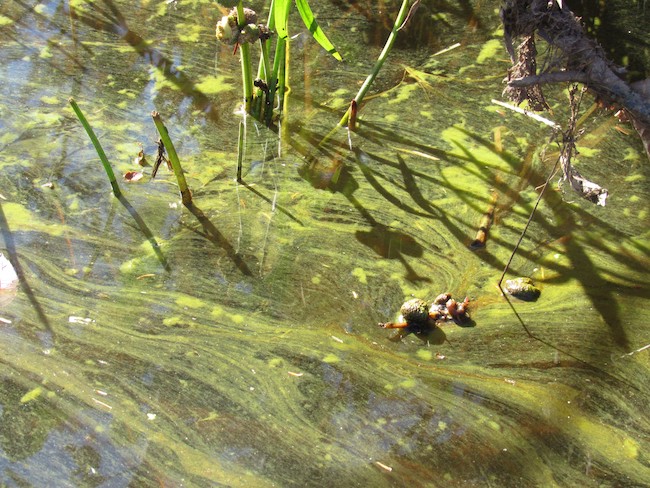Fredericton, NB – The provincial government has partnered with communities and organizations to install new cyanobacteria signage at ponds, lakes and rivers throughout New Brunswick.
Cyanobacteria, which includes blue-green algae, are naturally occurring bacteria found in many bodies of water. They are not normally visible, but under certain conditions, can increase in numbers to form visible surface blooms or benthic mats.
The signs will describe cyanobacteria and inform the public on how to stay safe. A new cyanobacteria web page has also been created.
These new signs will not replace health advisory signs and do not indicate that a cyanobacteria bloom has been observed in the body of water. If a cyanobacteria bloom is detected, a health advisory sign will be posted.
In addition, the provincial government supports cyanobacteria projects which includes research along the Saint John River and in several lakes, intended to better understand the distribution of cyanobacteria and potential toxins.
Dr. Yves Léger, acting deputy chief medical officer of health, reminds New Brunswickers that while not all cyanobacteria are harmful, some may produce cyanotoxins which can cause skin, eye and throat irritation. More serious health effects such as gastrointestinal illness can occur if cyanotoxins are consumed. These toxins can also be harmful to pets, fish, wildlife, and livestock.
“We want residents to be active and enjoy the outdoors, but we also want them to understand and consider the potential risks of exposure to cyanobacteria,” said Léger. “New Brunswickers are encouraged to familiarize themselves with the appearance of cyanobacteria blooms, in order to minimize the risks for themselves, their loved ones and their pets.”
While most commonly blue-green in colour, surface blooms can also look green, red, or brown. Benthic mats, which can form along the bottom of lakes and rivers, can look like clumps of vegetation that can appear black, brown or dark green in the water, but when washed up on the shore they may appear brown or grey once they have dried. They can also be attached to rocks or aquatic vegetation.
“There are things you can do to help protect yourself while enjoying activities in our ponds, lakes and rivers,” said Léger. “Cyanobacteria blooms can be unpredictable, so it is important to always check the water and scan the shoreline before entering and to avoid swimming in areas where there are visible blooms or mats.”
Other safety advice includes:
- Always supervise young children and pets near bodies of water.
- Do not swallow lake or river water.
- Bathe or shower after being in rivers, lakes or ponds.
- Do not enter the water with open cuts or sores.
- Always wash your hands before eating.
Pet owners are advised that benthic mats, including those that wash up along the shores of lakes and rivers, can be toxic and potentially lethal to dogs if consumed. Dogs are attracted to their odour and should not be permitted to eat vegetation along the shore or floating benthic mats. As a precaution, children and adults should not play with or handle benthic mats while wading, fishing, boating or otherwise enjoying recreational activities in the water.









